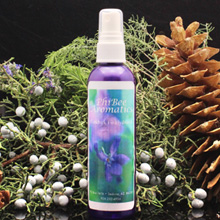Hydrosols
 Arabella clipping Clary Sage for distilling hydrosols |
Hydrosol (also called hydrolat) is the water portion of the steam distillation process. They contain water soluble constituents and a minor amount of emulsified essential oil. Their aromatic character is often quite different from the essential oil. All of the non-native hydrosols listed here, are naturalized or cultivated in Arizona, and are either unsprayed or organic. All hydrosols are collected and stored in glass containers until an order is filled. Please remember that diffusing hydrosol and/or essential oil is therapy and should be done for no more than 20 - 30 minutes, every three to four hours. For in-depth study and information about hydrosols, please refer to these two excellent books: “Hydrosols, The Next Aromatherapy”, by Suzanne Catty, and “Harvest to Hydrosol, Distill Your Own Exquisite Hydrosol at Home”, by Anne Harman.
All hydrolats are $20 and contained in 4 oz. PET plastic bottles. All prices include shipping.
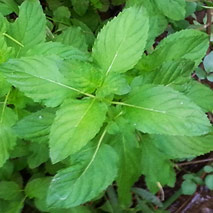
Bergamot Mint Hydrosol (Wildcrafted)
This mint has naturalized on the edge of a spring in the Verde Valley. It has an uplifting effect and is lovely diffused in a room or as a cooling facial spray. One half to one teaspoon can be added to a cup of lemon or lime aid for a cooling and refreshing summer beverage.
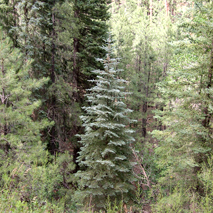
Blue Spruce Hydrosol (Wildcrafted)
The lovely aroma of this hydrosol makes it perfect for a bath or for diffusing in a room for respiratory support. Known for its endocrine support, recent studies have shown Blue Spruce to be especially helpful for the Prostate gland, and the hydrosol can be used in a vitalizing bath for men. The boughs for this hydrosol are collected on the high elevation Kaibab Plateau (9,000 ft), north of the Grand Canyon.
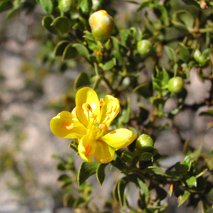
Chaparral/Pinyon Co-distill Hydrosol (Wildcrafted)
People in the Southwest often refer to the aroma of Chaparral as “the smell of rain in the desert”. The reason for this is that the plant secretes tiny droplets of resin that fall all around it. When heavy rain hits the soil, the aroma of the resin is lifted into the air. The resin inhibits the sprouting of other seeds, which is why Chaparral is such a successful species. It also inhibits the growth of bacteria and other microbes, so the hydrosol makes a good antiseptic spray. With the addition of Pinyon Pine, it can be diffused for respiratory support. It has a powerful aroma, so it is recommended to start with a very low dilution, such as one teaspoon and then work your way up if desired, when diffusing.

Desert Lavender Hydrosol (Wildcrafted)
Soothing, cooling, and relaxing, this hydrosol has many uses. The tea has been used traditionally for digestive disorders such as acid reflux and intestinal irritation, and for excessive menstrual bleeding. One half to one teaspoon of the hydrosol in a cup of warm water has a pleasant taste and may provide relief for these conditions. It has an anti-inflammatory effect on the skin, and is excellent for bug bites, rashes and irritations. It also makes a wonderful sitz bath for relieving vaginal irritation, or can be sprayed directly onto vaginal tissue for instant cooling relief.

Eucalyptus, Omeo Gum Hydrosol
This species is one of the few that can survive in elevation, and does well in the Sedona area. When diffused, this hydrosol has a potent mucolytic and airborne antimicrobial effect. One tablespoon diluted in 50 mls of water and diffused with a drop of the essential oil, is a helpful preventative for colds and flus. One half to one teaspoon can also be added to warm water for an antiseptic gargle or mouth rinse.
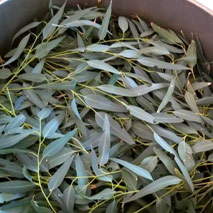
Eucalyptus, River Red Gum Hydrosol
These magnificent, old growth trees were planted some time ago at Castle Hot Springs, in the foothills of the Wickenburg Mountains, Arizona, and are fed by the mineral springs. This hydrosol has strong mucolytic and antimicrobial properties, and can be used much in the same way as the Omeo Gum Eucalyptus hydrosol. Diffused by itself or with other hydrosols, such as citrus, it is an active air purifier and may help prevent respiratory infections.
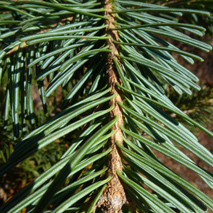
Fir, Corkbark Hydrosol (Wildcrafted)
This hydrosol is from tree boughs that grow above a 9,000 elevation in Arizona. Its sweet, clean, uplifting aroma, and calming effect are a reflection of the peaceful mountain top where the boughs originate. This is one of our favorite hydrosols to diffuse, and children love it. This has an antispasmodic effect and is great for respiratory support.
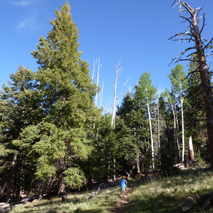
Fir, Douglas Hydrosol (Wildcrafted)
The tree boughs for this hydrosol are collected on the edge of the Mogollon Rim in Arizona. This is a somewhat stressful environment for Douglas Fir trees, so they create a wonderfully complex chemistry. The hydrosol is sweet and fabulous in a diffuser for its respiratory benefits, or in a pain relieving, calming bath or foot soak with Epsom salts.

Fir, Subalpine Hydrosol (Wildcrafted)
The boughs for this hydrosol grow on trees located on the high elevation Kaibab Plateau, which is the southern most edge of their range. Aromatically sweet and complex, this hydrosol can also be diffused for respiratory support, or used topically in compresses for aches and pains.
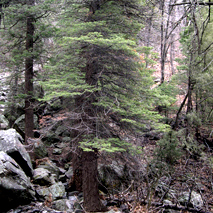
Fir, White Hydrosol (Wildcrafted)
White Fir is analgesic for joint, muscle, bone and ligament pain, and is beneficial in compresses for any of these. Gathered from trees located on the edge of the Mogollon Rim, Arizona, it’s clean aroma reflects the environment from which it came, and indicates its usefulness as an antiseptic wash.
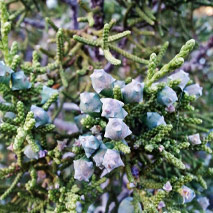
Juniper, California Hydrosol (Wildcrafted)
This lower elevation juniper grows in the Mohave Desert and has some unique growth habits. Its chemistry changes dramatically from tree to tree, and the males and females alternate their production of citronellol. The aroma of the hydrosol is camphoraceous with a mild citrus top note. One tablespoon with one tablespoon of a citrus hydrosol, combined in 50 mls of water with a drop or two of a citrus EO, can be diffused for 20 – 30 mintues to cleanse a room and support immunity. Not recommended for internal use as a tea.
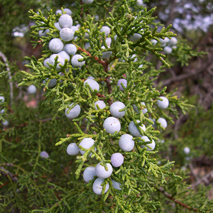
Juniper, Utah Hydrosol (Wildcrafted)
Juniper hydrosols are strong diuretics when used topically, as in a compress. Utah Juniper hydrosol is also a good, astringing facial cleanser for acne because it contains small amounts of borneol, terpenine-4-ol and camphor. The aroma is very powerful and this hydrosol in not recommended for ingestion as a tea, or for pregnant women, babies, elders.
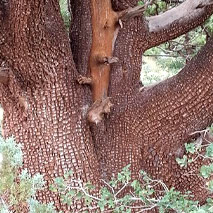
Juniper Wood, Alligator Hydrosol (Wildcrafted)
Juniper woods (Cedarwoods) are great hair tonics, which are frequently used in balding formulas. This hydrosol has a rich, smoky aroma that is agreeable to most men, and is helpful spritzed on the hair and scalp for both men and women. It is a good anti-inflammatory for the skin and can be used alone or as part of a relaxing bath blend. It has many uses and is one of our favorite pillow sprays. We also use it in our laundry, and as a hardwood floor wash.
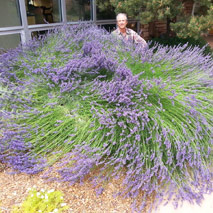
Lavandin Hydrosol (Unsprayed, locally cultivated)
These plants are unsprayed (organic, but not certified) and locally cultivated in the Verde Valley. Slightly more antiseptic than Lavender, this hydrosol makes a good warm compress for children’s (or big people’s) ear infections. It is wonderful in a diffuser to purify the air when there is illness in the house, or to maintain wellness. It is also makes an uplifting and cooling face and body spray.
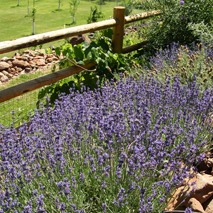
Lavender Hydrosol (Unsprayed, locally cultivated)
These plants are also locally cultivated and unsprayed (organic, but not certified) in the Verde Valley. This is a favorite summertime facial and skin healing spray. Refreshing and cooling, it is helpful for sunburns, bug bites and hydration. It makes a wonderful hair spray for bringing body back to heavy or flat feeling hair, especially in a dry climate. The sweet, floral aroma is heavenly in a diffuser before bedtime to aid in falling asleep.
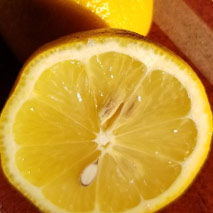
Lemon Peel Hydrosol (Unsprayed, locally cultivated)
These unsprayed peels are locally grown in the lower elevation of Arizona, where the trees can survive, and their aroma is divine! Antiseptic and tonifying, the hydrosol makes a gentle early morning cleansing tea (1 tsp. in a cup of warm water), and is a great addition to summer drinks. We’ve added it to hand and surface sanitizing sprays (one part Lemon Peel hydrosol to 3 parts 190 proof alcohol, with a few drops of Lemon Peel EO). On its own, it is a great household and glass cleaner, adding a brightness to the air. It is beautiful in a diffuser, just on its own or mixed with various conifer hydrosols and EO’s.
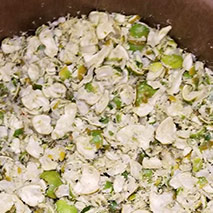
Lime Peel Hydrosol (Organic)
These peels are from Arizona organic farms, and are brought to us by Local Juicery, Sedona. The aroma of this hydrosol is delicious and one teaspoon is a wonderful addition to many refreshing drinks. It too blends beautifully with conifers in the diffuser, for purifying the air, and providing respiratory support.
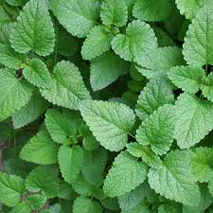
Melissa Hydrosol (Cultivated, unsprayed)
These plants have magically volunteered in our own garden (maybe we need their calming infuence!). This calming and uplifting hydrosol is a good digestive aid, and has a pleasant taste both in warm and cold water. It can be used undiluted as a topical treatment for herpes outbreaks, and in a diffuser for its antiviral properties.
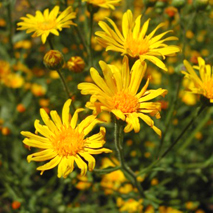
Mexican Arnica Hydrosol (Wildcrafted)
This hydrosol makes a fantastic compress for trauma, bruises, swelling, and menstrual cramps. It is also perfect in a foot soak for tired, achy, swollen feet (with an added antifungal benefit!). Its unique aroma is reminiscent of standing in a field, on a warm late summer day.

Meyer Lemon Peel Hydrosol (Organic)
These peels are from Arizona organic farms, and are brought to us by Local Juicery, Sedona. The aroma is bright and sparkly, and it has a strong astringing quality. Great as a warm or cold beverage (1 teaspoon per cup of water) for a gentle cleansing effect, or added to other drinks for additional flavor and therapeutic benefits. It is brilliant in a diffuser for its antiviral properties, and is also a clarifying glass and surface cleaner.
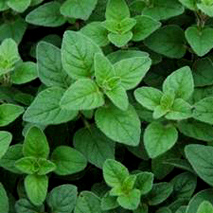
Oregano Hydrosol (Cultivated, unsprayed)
This hydrosol is a co-distill of the Greek, Syrian and Kyrgistani varieties, that grow in abundance in our garden (and have basically taken up residence on the entire property). Strongly antimicrobial, it is an effective sore throat spray (start by diluting 50/50 with water, and increase oregano if a stronger effect is needed). The temperature is quite spicy hot, so it is not well suited as a topical spray for the skin.

Peppermint Hydrosol (Wildcrafted)
These plants escaped from homesteaders gardens along various waterways in the Verde Valley, and have beautifully naturalized without over crowding out native plants. Peppermint is well known for its cooling and digestive properties. The hydrosol makes a wonderful body spray in the summertime to assist in staying cool (something we think about a lot in the Southwest). It also has a gentle stimulating effect, which can be helpful with the feelings of fatigue that can accompany hot weather. One teaspoon added to a cup of warm water is not only an excellent digestive, but is also tremendously helpful in easing stomach pain and nausea from a flu virus.

Pine, Pinyon Hydrosol (Wildcrafted)
Pinyon Pine is a classic scent of the Pinyon/Juniper woodlands of the Southwest. It is our lowest growing pine and very abundant in Northern Arizona. The hydrosol has a more woody aroma than the essential oil, so it is nice to diffuse them together for respiratory support. One teaspoon in a cup of warm water is an effective diaphoretic during a cold or flu, and it can also be used as a bladder cleanser for occasional mild irritation.
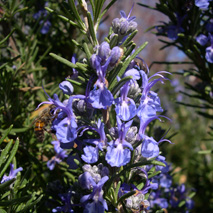
Rosemary Hydrosol (Cultivated, unsprayed)
We planted Rosemary in our garden more than 20 years ago, and the plants are still thriving! We distill the flowering stalks fresh, which makes for a lower yield, but a more lovely, honey like aroma. The hyrosol is a beautiful and refreshing face and scalp tonic. It can be misted or cotton balled onto the face, especially for oily skin. It can also be misted onto the scalp, but I prefer to pour about a tablespoon directly onto the scalp after showering. These treatments are recommended as part of a morning routine, as they can have a stimulating effect and interfere with falling asleep. One teaspoon can be added to a cup of warm water as a mucolytic and expectorant for respiratory congestion. Even though the camphor level is very low (it is the pinene/cineole chemotype), it should be avoided by pregnant women and those with high blood pressure.
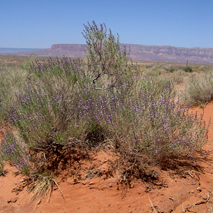
Rosemary Mint Hydrosol (Wildcrafted)
It is rare to find a mint family plant in the high desert. To qualify as a desert, an area must average no more than 10 inches of rain per year. We use a very light touch on these plants, and only in a year when there has been good rain, so sometimes we let it go a year or two. The plant contains a high level of pulegon, and is aromatically similar to Pennyroyal. This unique hydrosol makes a very cooling body mist, and a good facial toner. It is unsuitable for pregnant women.
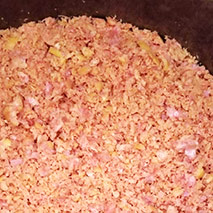
Ruby Red Grapefruit Peel Hydrosol (Organic)
These peels are from Arizona organic farms, and are brought to us by Local Juicery, Sedona. The hydrosol has a mild aroma and is extremely astringing and tonifying for the skin. Diffuse with a drop or two of the essential oil for the full range of its antiviral properties, and to bring out the tangy brightness of aroma.
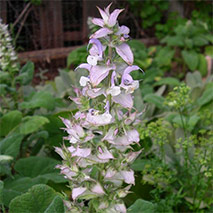
Sage, Clary Hydrosol (Cultivated)
We planted some Clary Sage around 20 years ago, and it did terribly. But apparently it made some seed because the next year it came up everywhere. Unlike most plants which are collected mid day for distillation and medicinal purposes, Clary Sage is best collected around midnight, when it’s oil content is the highest. It is a lunar plant, and this speaks to its many traditional uses for women’s needs. It is a well known anti depressant and mood uplifter, and can be diffused for this purpose. One half to one teaspoon in a cup of warm water can be a wonderful tea for relieving menstrual cramps and hot flashes. Misted on the face, it has astringent and tonifying qualities.

Sage, Cleveland Hydrosol (Cultivated)
A native of Southern California, this true Salvia contains both linalool and camphor, making its hydrosol a nice remedy for oily, irritated acne. Its aroma is powerful and unique, and for those who are familiar with this plant, it is very much connected to a sense of place. Due to the camphor content, it is not suited for internal use or by pregnant or lactating women, or those with neurological sensitivities.
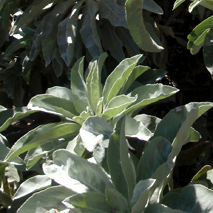
Sage, White Hydrosol (Cultivated)
This Sage is a native of Southern California, but does well in the Verde Valley, if we don’t have to deep of a freeze in winter. High in cineole, it is a good mucolytic and airborne antimicrobial, but generally it is used as a smokeless smudge for clearing the air. We distill the leaves and flowers fresh, which greatly reduces the camphor content (less than 1% in the essential oil), but to be on the safe side, it should be avoided by pregnant or lactating women.
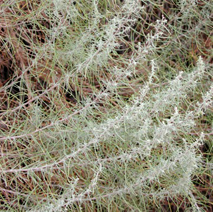
Sandsage Hydrosol (Wildcrafted)
This “Sage” is actually an Artemisia, with a classic high desert aroma. Diffuse one tablespoon diluted in 50 mls of water, for the clarifying and expansive feeling of the Vermilion Cliffs, where these plants originate. This hydrosol has an antitussive and mucolytic effect, and is helpful for spastic coughing. The ketone levels are low when distilled in the spring, but to be safe, it should be avoided by pregnant or lactating women, and people with neurological sensitivities.
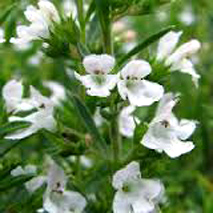
Savory, Winter Hydrosol (Cultivated) SOLD OUT
These plants are from our own garden, and have been thriving without any help from us. This hydrosol is a fantastic sore throat remedy, especially when sprayed undiluted at the very onset of symptoms. It is very spicy hot, and unsuitable for topical use.
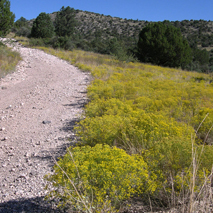
Snakeweed Hydrosol (Wildcrafted)
There is so much Snakeweed growing wild in our area, that we barely need to leave the neighborhood to wildcraft it. It is a rather painstaking process however! This unusual hydrosol has many uses. One half to one teaspoon diluted in a cup of warm water is a good digestive aid. The same ratio can be used as a uterine tonic for women. Added to a warm bath, it has a pain relieving action, and is also very good in a foot bath. Please do not use the essential oil in a bath. I learned the hard way that it is to strong and can cause the skin to become irritated.
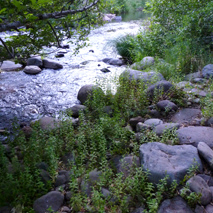
Spearmint Hydrosol (Wildcrafted)
Spearmint also escaped from homesteader’s gardens and mainly naturalized in springs in the mountains around the Verde Valley. This is a very cooling and gentle hydrosol, and is well suited for children. One half teaspoon in warm or cool water, is wonderful for children with tummy aches. One teaspoon in warm or cool water, is an uplifting digestive for adults. It is very soothing in the diffuser, or spritzed on the skin for summertime heat.

Vitex Hydrosol (Cultivated)
Vitex trees are fairly common in the Sedona area, and they do quite well here. We distill the branch tips when the berries have matured and become oily. This hydrosol is best known for women’s hormonal support, in the relief of premenstrual and menopausal symptoms. For best results, please consult a clinical aromatherapist before use. Not to be used by pregnant women.

Yarrow Hydrosol (Wildcrafted)
Yarrow grows in the mountainous areas of Arizona, and it is a joy to collect and distill. This is a hydrosol that we hope never to be without. It is the only hydrosol that we use for itchy, allergic, irritated eyes. Sprayed on closed eyes, the relief is so profound that we have not ventured any further. It is cooling and also helpful for irritated or sunburnt skin, and reducing fevers in the case of colds or flus. It is mildly antiseptic and good for treating wounds because it also helps stop bleeding. One teaspoon, diluted in a cup of warm water, is a digestive aid for heartburn, and a compress can help ease chronic pains. Fantastic!
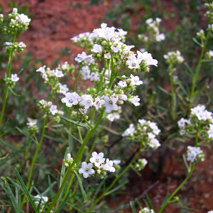
Yerba Santa / Pinyon Hydrosol (Wildcrafted)
The premier actions of this co-distill hydrosol are its mucolytic, antitussive, antimicrobial effects. Dilute one tablespoon in 50 mls. of water and diffuse for 20 -30 minutes, 2-3 times a day for respiratory protection and support.


